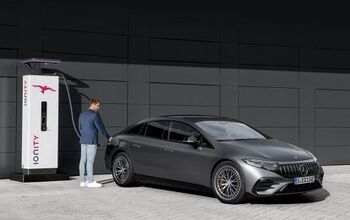Uber Eager to Restart Autonomous Testing, This Time With Two Safety Drivers

Are two safety drivers better than one when it comes to the testing of self-driving cars? Uber Technologies feels it is, declaring as much to Pennsylvania’s road regulator. The company has filed an application with the state’s department of transportation to resume testing of autonomous Volvos, eight months after a fatal collision with a pedestrian on a darkened Arizona highway.
Uber stopped all autonomous testing in the wake of the March 18th collision, with the Arizona program dismantled for good. In Pittsburgh, the company hopes to show it learned from the safety lapses revealed in the accident investigation. These Volvos now have two fail-safes on board. Is it enough to restore the public’s trust?
In its preliminary report on the events leading up to the death of 49-year-old Elaine Herzberg, the National Transportation Safety Board revealed that the self-driving XC90 “saw” the victim 6 seconds before the collision, but didn’t try to stop. It was also revealed that the safety driver was streaming a reality show on her phone, glancing away from the road in the seconds leading up to the crash. (The driver claims she was monitoring a seperate screen used to display vehicle functions). It was ultimately the safety driver who applied the brakes, but only after the collision.
Unlike the Arizona vehicles, Uber said the Pittsburgh fleet will not have their manufacturer-supplied automatic emergency braking system disabled to make things smoother for the autonomous drive system fitted to the Volvos. Uber was accused of dumbing down the safety of its test vehicles to avoid jerky, unnecessary braking. While the Tempe, Arizona Volvo recognized the looming victim, sources claim Uber’s drive system was programmed to ignore “false positives.” The elimination of the car’s factory AEB system made the situation all the more dangerous.
Then there’s the human element. With two safety drivers on board, Uber seems to feel that at least one pair of eyes will be on the road ahead at any given time. That’s a better setup than before, but in these Wild West early days of autonomous driving, nothing’s foolproof.
“Our goal is to really work to regain that trust and to work to help move the entire industry forward,” Noah Zych, Uber’s head of system safety for self-driving cars, told the Associated Press. “We think the right thing to do is to be open and transparent about the things that we are doing.”
Following the Tempe crash, Uber brought aboard former NTSB chair Christopher Hart to perform a review and change the company’s “safety culture.” In a lengthy report attached to Friday’s DOT application, Uber said it has introduced more rigorous training for safety drivers, among other initiatives. Pennsylvania officials have until Nov. 13 to approve or reject the application.
[Image: Uber Technologies]

More by Steph Willems
Latest Car Reviews
Read moreLatest Product Reviews
Read moreRecent Comments
- GregLocock Not as my primary vehicle no, although like all the rich people who are currently subsidised by poor people, I'd buy one as a runabout for town.
- Jalop1991 is this anything like a cheap high end German car?
- HotRod Not me personally, but yes - lower prices will dramatically increase the EV's appeal.
- Slavuta "the price isn’t terrible by current EV standards, starting at $47,200"Not terrible for a new Toyota model. But for a Vietnamese no-name, this is terrible.
- Slavuta This is catch22 for me. I would take RAV4 for the powertrain alone. And I wouldn't take it for the same thing. Engines have history of issues and transmission shifts like glass. So, the advantage over hard-working 1.5 is lost.My answer is simple - CX5. This is Japan built, excellent car which has only one shortage - the trunk space.


































Comments
Join the conversation
I guess next time Uber kills someone they can just doctor the video again to make it look it is pitch black and that no human driver could have avoided the collision. No one in the media or the police department will question a video even though it is put out by Uber, because video is regarded as infallible. Uber will then pay a "big" seven figure settlement to the family, which is a drop in the bucket for them, and they can repeat this process to their heart's content. Just goes to show you can be the shittiest company around and not give a damn about your customers, their safety, or their privacy, but people will happily give you their money as long as you enable their laziness and have a nifty app. I guess calling a cab is just so much more arduous than using uber.
So let me get this straight: the way to improve the safety of a system supervised by one person staring down into their smartphone is to have two people staring into their smartphones? Or better yet, yakking with and otherwise distracting each other as their gizmobile plows into cyclists and concrete dividers, or panic stops for no apparent reason?